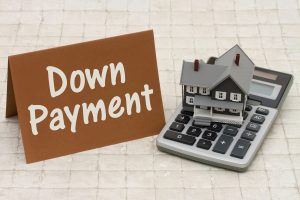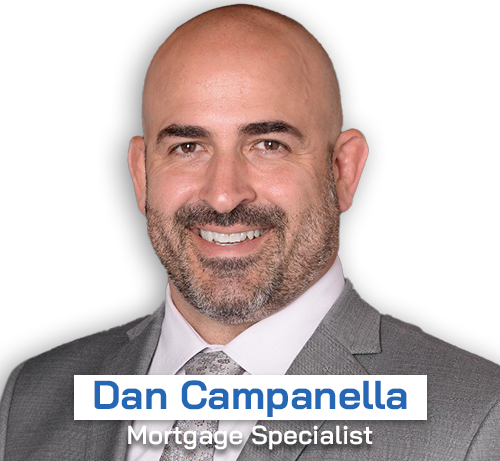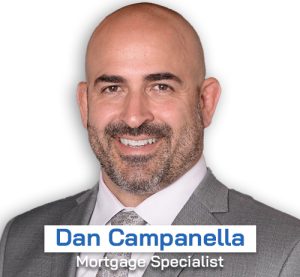
What Is A Down Payment?
A down payment is cash that you pay when you make a large purchase, for example, a home. The loan will be used to pay the leftover amount of the purchase over time. A down payment is usually a percentage of the total price. An example is that a 10% down payment on a $450,000 home would be $45,000.
When you fill out an application for purchasing a home, the down payment is what you are putting towards the purchase, and this represents ownership of the home. The mortgage lender will provide the rest of the payment for the home. Most lenders require a down payment for mortgages. However, some types of loans go through federal government programs and might not require a down payment. There is more information about that below.
Should You Put 20% Down On A House?
You may have heard that it is good to put a 20% down payment on a home, but that is a threshold that lenders use for requiring mortgage insurance on a conventional loan. It is not necessary to make a 20% down payment to purchase a home. According to the National Association of Realtors, in 2021, most first-time home buyers made a 7% down payment. Repeat buyers averaged 17%.
Nerdy Tip
When you make a lower down payment, you can get to the end goal of home ownership quicker. However, a higher down payment makes for lower principal and lifetime interest payments, which cost less overall. You can take the pros and cons of each to figure out what is best for your situation.
Minimum Down Payment Requirements
Your down payment can vary depending on the type of mortgage. A 0% down payment mortgage is offered by the US Dept of Veterans Affairs. VA loans do not typically require a down payment. VA loans are only available for current and veteran military service members and eligible surviving spouses. USDA loans are backed by the US Dept of Agriculture’s Rural Development program and also require no down payment. USDA loans are for rural and suburban home buyers who meet the program’s income limits and other requirements.
As low as 3% down payment mortgages are available provided you meet certain income limits. These conventional loans are not backed by the government, but they follow the down payment guidelines set by government-sponsored enterprises (GSEs) like Fannie Mae and Freddie Mac.
FHA loans are backed by the Federal Housing Administration and require as little as 3.5% down provided your credit score is at least 580. If your credit score is between 500 and 579 then you would need to put 10% down.
As low as 10% down mortgages are available with home loans that fall outside the Federal Housing Finance Agency’s loan limits. Since these loans cannot be guaranteed by the GSEs, the lenders ask for a higher down payment to offset some of the risks.
With little or no down payment loans, you pay for the guarantee through fees or mortgage insurance, dependent on the program.
Benefits Of A Larger Down Payment
It takes time to save enough money for a substantial down payment. A low or no down payment option may speed up your ability to purchase a home.
Advantages to making a large down payment:
- Better interest rate mortgage: Lenders may be able to shave a few fractions of a percentage point off your interest rate when a larger down payment has been made. When you are borrowing less of the home’s price, there is less risk for the lender, and they will pass that on to you with more favorable terms.
- More equity in your home right away: Home equity is the value of your home minus the amount owed. It is the extent that your home is an asset rather than a debt. More equity equals more wealth.
- A lower monthly mortgage payment: Borrowing less of the price of the home lowers your principal which means paying less interest over the life of your loan.
- Lower upfront and ongoing fees. Zero to low down payment government-backed mortgage programs reduce the risk taken by lenders since they guarantee a part of the loan. If a borrower were to default on the loan, the government agency associated would reimburse the lender. To offset some of that cost, these loans come with significant one-time costs, such as the VA funding fee, or added ongoing costs like FHA mortgage insurance.
How Much Should You Put Down On A House?
The amount of down payment that makes sense for you depends on your goals and financial situation. There are plenty of pros for making a larger down payment; however, if you put down too much, you could be strapped for cash. Conventional mortgages usually require you to pay for private mortgage insurance if your down payment is less than 20%. Once you start making mortgage payments you can ask to cancel the PMI after you achieve 20% equity in your home. Try some different scenarios to help you to better understand how changing the amount of the down payment can affect other costs.
Other Considerations To Determine Your Down Payment
Your mortgage payment is just one part of your household budget. Keeping that in mind, here are some other factors to consider when planning for the size of your down payment.
- Keeps some savings in the bank: Do not use your entire life savings for a down payment on your house. You could end up “house poor.” Don’t spend too much of your income on your mortgage or deplete your emergency fund.
- Don’t forget about closing costs: It is important to keep enough cash on hand for covering the closing costs. This is usually 2-5% of the home’s purchase price.
- Plan for ongoing costs of homeownership: Leave a cushion for maintaining your home repairs and potential emergencies. You want to make sure your down payment leaves you with enough room to cover all the costs of purchasing a home as well as furnishing the home once you have moved in.
- Shop around: Do your research and compare mortgage rates from 3-5 lenders. Look into programs offered by lenders and consider down payment assistance options, especially if you are a first-time home buyer.
Contact Dan (954-336-1922) for a free consultation!
—
 About Dan Campanella – Mortgage Specialist
About Dan Campanella – Mortgage Specialist
Dan provides clients with years of proven experience and an abundance of financing options for their mortgages. His common sense approach and devotion to customer service is what sets him apart in the highly competitive mortgage industry. Dan prides himself on consistently delivering “referable services” to his clients, referral sources, and partners.

